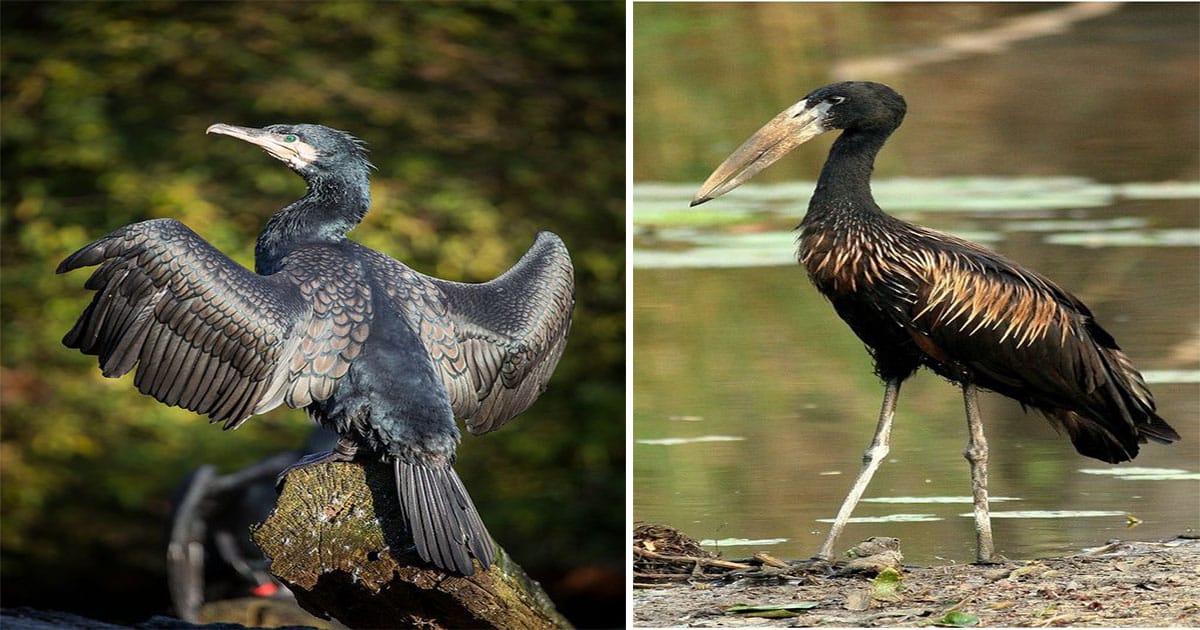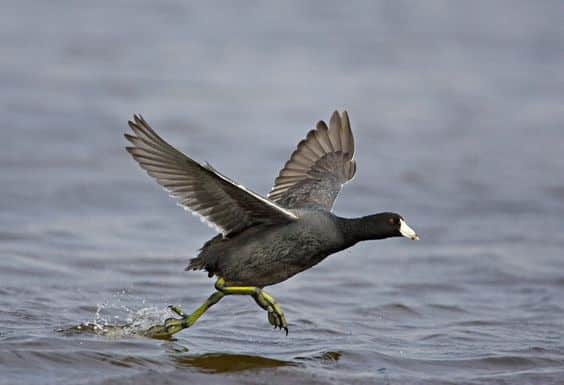
The Eurasian coot, often mistaken for a duck, is a remarkable wading bird that stands out with its distinct characteristics and behavior. Unlike ducks, coots have splayed toes instead of webbed feet, which sets them apart in the avian world. Let’s delve into the intriguing world of the Eurasian coot and explore what makes this bird truly fascinating.
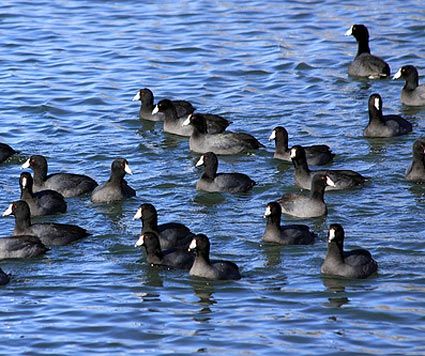
With its striking black head and neck, accompanied by a dark grey body, the adult male Eurasian coot is a sight to behold. During flight, its secondary flight feathers exhibit white tips, creating a captivating contrast against the inner wing. The coot’s eye is a prominent deep red, while its bill is white and extends into a white facial shield between the eyes and onto the forehead, reminiscent of the red face shield of the smaller Common Moorhen.
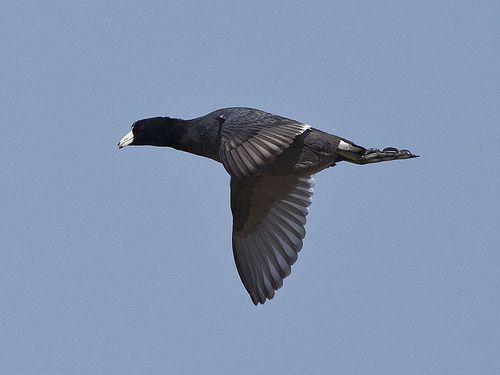
The female Eurasian coot shares a similar appearance with the male, although slightly smaller in size. Meanwhile, juveniles sport a brownish-grey hue with a greyish-white throat and underparts, along with a yellowish bill. These variations in plumage add to the charm and diversity of this captivating species.
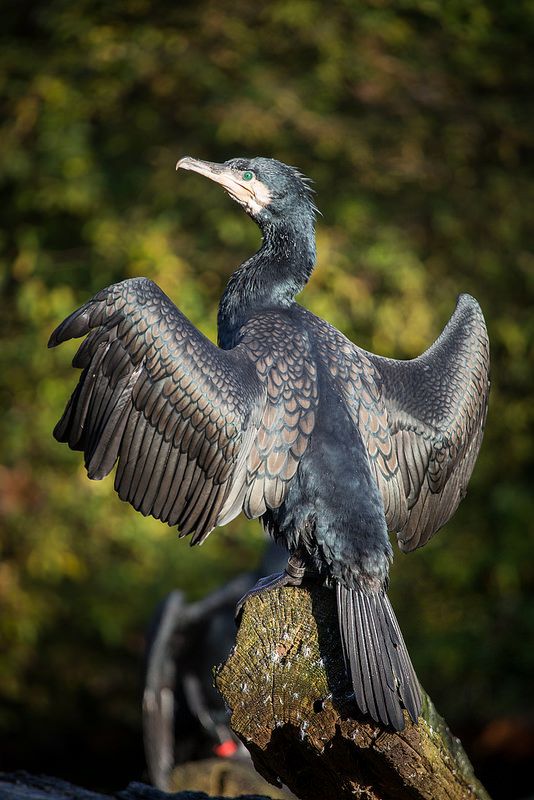
One remarkable aspect of the Eurasian coot is its distinctive vocalizations. Coots can appear quarrelsome, and the males often emit sharp metallic clicks and repeated calls that resemble “kick” or “kick-kick.” These unique vocalizations contribute to their communicative repertoire and help establish territory or attract a mate.
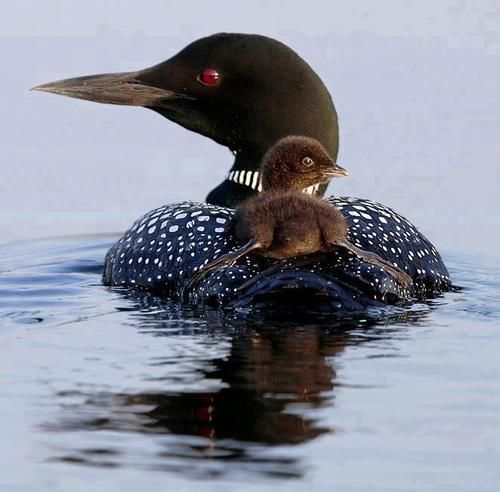
When it comes to foraging, coots exhibit an interesting behavior. Unlike ducks that eat their food while submerged, coots prefer to surface before consuming their prey. They have a predominantly vegetarian diet, feeding on aquatic plants, algae, grasses, as well as tadpoles and small aquatic creatures. With their large and pale grey feet, equipped with almost bulbous toes, coots adeptly dive to the bottom of lakes or reservoirs to find their meals.
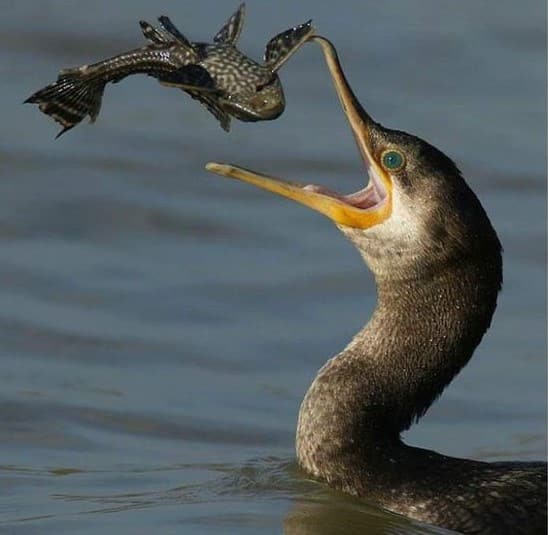
The Eurasian coot’s distribution is widespread, spanning across Europe, Asia, and parts of Africa, as well as regions such as Indonesia, Australia, and New Zealand. While some coots are resident throughout the year, those in northern and eastern Europe migrate to sub-Saharan Africa and Southeast Asia during the winter months.

Breeding is a significant phase in the life of a Eurasian coot. Nests, constructed by both the male and female, are built using reeds, leaves, roots, and twigs. They are usually situated in water close to surrounding vegetation or overhanging tree branches. The incubation period lasts between twenty-one to twenty-six days, and the parents collectively care for the brood of six to ten eggs. Fledging occurs approximately fifty-five to sixty days after hatching, ensuring the survival of the next generation.
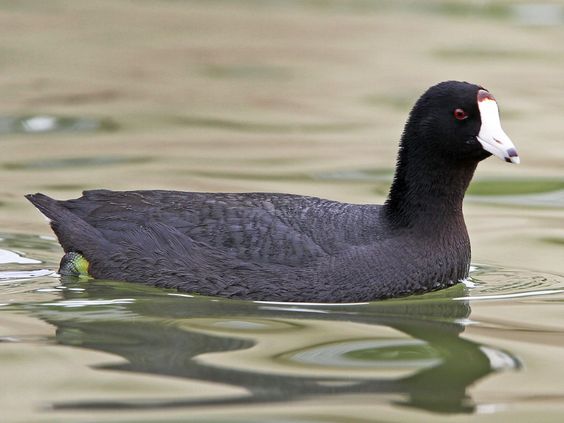
In the realm of avian wonders, the Eurasian coot stands out for its unique identity and behavior. Its distinction from ducks, coupled with its captivating appearance, vocalizations, and foraging habits, make it a bird worth observing and appreciating. Whether encountered in freshwater lakes, ponds, or even saltwater estuaries, the Eurasian coot never fails to intrigue and leave a lasting impression.
So, the next time you come across a wading bird resembling a duck, take a closer look. It might just be the enigmatic Eurasian coot, reminding us of the incredible diversity and marvels that nature has to offer.
